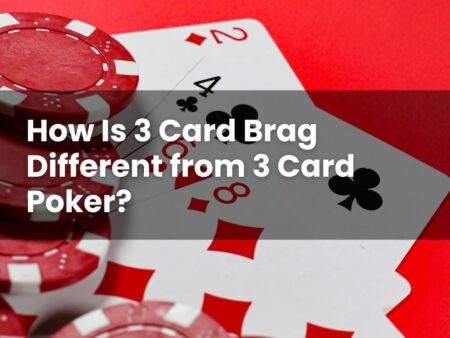Blackjack is one of the most played card games in UK casinos, both online and in person. The aim is to get closer to 21 than the dealer, without going over.
While the rules may sound simple, knowing the difference between “hard” and “soft” hands can help make the game easier to follow. These two terms are used in almost every version of blackjack and learning them gives you a clearer idea of how to make decisions when you are at the table.
This guide explains both hand types in detail, how to play them, and some common mistakes to watch out for.
What Is Hard and Soft in Blackjack?
Every card in blackjack has a value: 2–10 are worth their face number, picture cards (Jack, Queen, King) count as 10, and the Ace is special because it can be worth either 1 or 11.
This flexibility of the Ace is what creates hard and soft hands:
- A hard hand is a total without an Ace, or where the Ace must be used as 1 to try and avoid going over 21.
- Example: 10 + 8 = hard 18. Ace + 7 + 10 also makes hard 18, because the Ace can only count as 1.
- A soft hand is a total where an Ace is being counted as 11.
- Example: Ace + 6 = soft 17. If you add a 9, the Ace drops to 1 and the total becomes 16.
The difference matters because a soft hand gives more flexibility, while a hard hand locks you into a fixed total.
How to Tell the Difference Between Hard and Soft Hands
Spotting which type of hand you have comes down to the Ace:
- If the Ace is acting as 11, it’s a soft hand.
- If the Ace is counted as 1 (or there’s no Ace), it’s a hard hand.
Take Ace + 4 = soft 15. Add a 9, and the Ace has to drop to 1, leaving hard 14.
Recognising this difference is important because blackjack strategies are usually split into separate charts for hard and soft hands. These strategies are based on probability and can suggest whether hitting, standing, or doubling may be the stronger move. However, they cannot remove chance from the game, but they can help you make decisions that are mathematically sound.
How to Play Hard Hands in Blackjack
Hard hands leave little room to manoeuvre. Once the total is fixed, drawing another card might push you over 21, which often means taking a more cautious approach.
Your choices are often shaped by the dealer’s up card:
- If the dealer shows a strong card (7–Ace), hitting is often the recommended action on medium totals.
- If the dealer shows a weaker card (2–6), standing on mid totals may be the suggested play.
In UK-licensed blackjack, most games allow doubling down on any first two cards, though some might limit it to totals of 9–11. Before playing, you may want to check the rules for the version you are playing.
Common Examples of Hard Hands
Hard 17 (10 + 7): Strong, but inflexible. Drawing another card risks going over 21, so standing is usually the advised move.
Hard 16 (9 + 7): Often seen as a difficult hand. Hitting risks going bust, but standing may leave you behind if the dealer has a high total.
Hard 12–15 (e.g. 10 + 2 or 7 + 8): Mid-range totals. If the dealer’s up card is weak, standing may be recommended. Against stronger cards, hitting may be better.
Hard 11 (8 + 3): Considered one of the best positions to double down, since many cards can give you a strong total.
How to Play Soft Hands in Blackjack
Soft hands give you more flexibility because the Ace can act as 1 if needed. This means you can often take an extra card without instantly going bust.
The way you play soft hands depends heavily on the dealer’s card. Strategy charts often suggest being more active with soft hands, because the safety of the Ace allows for more aggressive decisions, such as hitting or doubling down.
In UK casinos, the dealer usually stands on soft 17 (called S17), but in some versions the dealer hits on soft 17 (H17). This rule can slightly change the best way to play soft totals, so checking the game information may be a good idea.
Common Examples of Soft Hands
Soft 13–17 (Ace + 2 to Ace + 6): Generally weak, so hitting is usually recommended. Doubling may be suggested in some matchups if the dealer’s card is low and the rules allow it.
Soft 18 (Ace + 7): Can be played as 8 or 18. Often a standing hand against weak dealer cards, but hitting or doubling may be better against stronger cards.
Soft 19 (Ace + 8): Considered a strong hand. In most strategies, the best play is to stand.
Even when following strategy guidelines, it’s important to remember that blackjack is a game of chance. Basic strategy is based on probability and can help guide your decisions, but it cannot remove uncertainty, so losses are still possible.
Why Hard and Soft Hands Change Your Playing Decisions
The difference between hard and soft hands affects how much freedom you have to act. A hard hand is fixed. For example, hard 16 will bust if you draw a 6 or higher.
A soft hand has an in-built cushion. With soft 17, you can take another card knowing the Ace can switch to 1 if the new total would otherwise go over 21.
This flexibility is why the same number total can lead to very different choices. A hard 17 is almost always played as a stand, while a soft 17 may be treated as a hand where you hit or even double, depending on the dealer’s card.
Because blackjack involves chance, these suggested moves cannot guarantee a win. They are based on probability and are designed to help give you a structured way to play.
Mistakes to Avoid When Playing Hard and Soft Hands
When learning blackjack, some common errors may make some decisions harder:
- Confusing an Ace’s value: Forgetting whether your Ace counts as 1 or 11 can lead to the wrong move.
- Not considering the dealer’s card: Your decision should take into account the dealer’s visible card, since it changes the likely outcomes.
- Using doubling at the wrong time: Doubling may be useful in some hands, but costly if used without checking whether the table allows it, or if the dealer shows a strong card.
- Overlooking table rules: Differences like whether the dealer hits or stands on soft 17, or when doubling is permitted, make a real impact.
- Spending more than planned: Blackjack is a game that involves chance. Setting limits for both time and money before you start can help you stay in control of how long you play and how much you spend. Always gamble responsibly.








